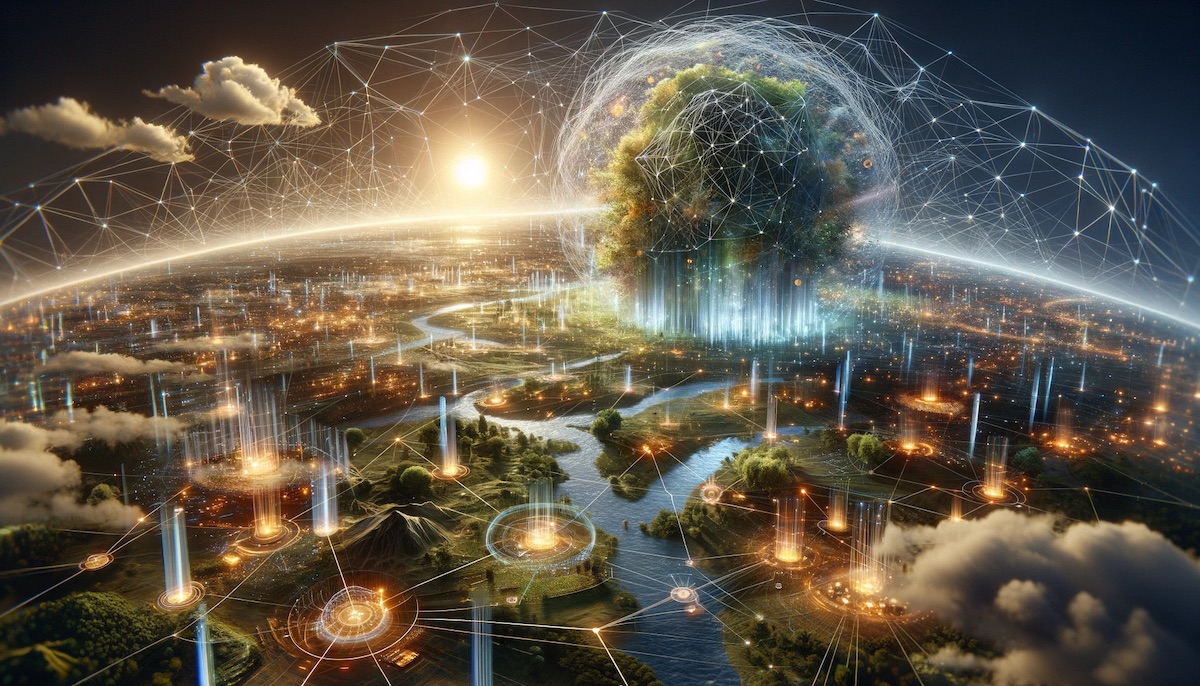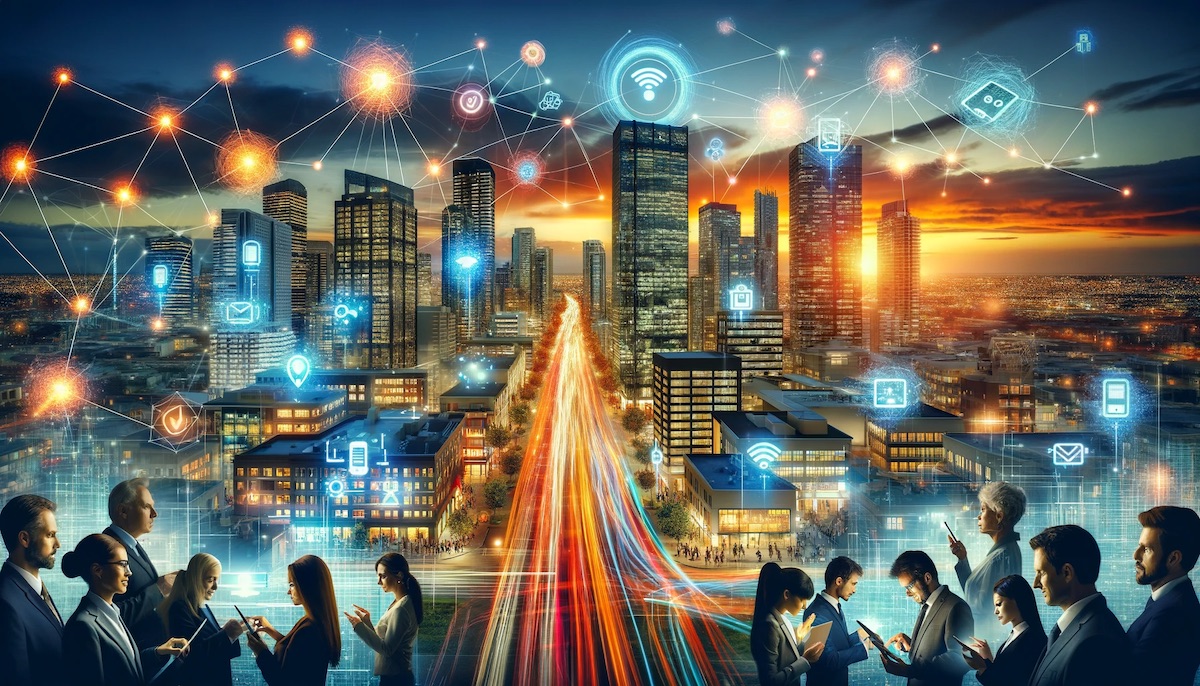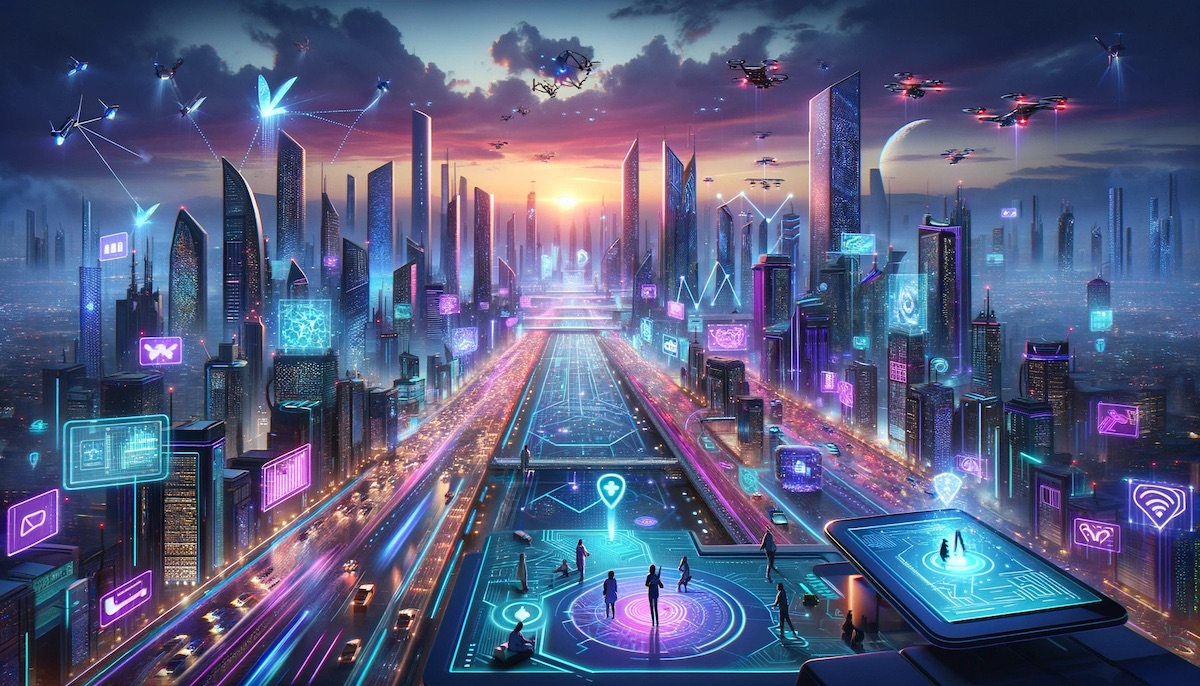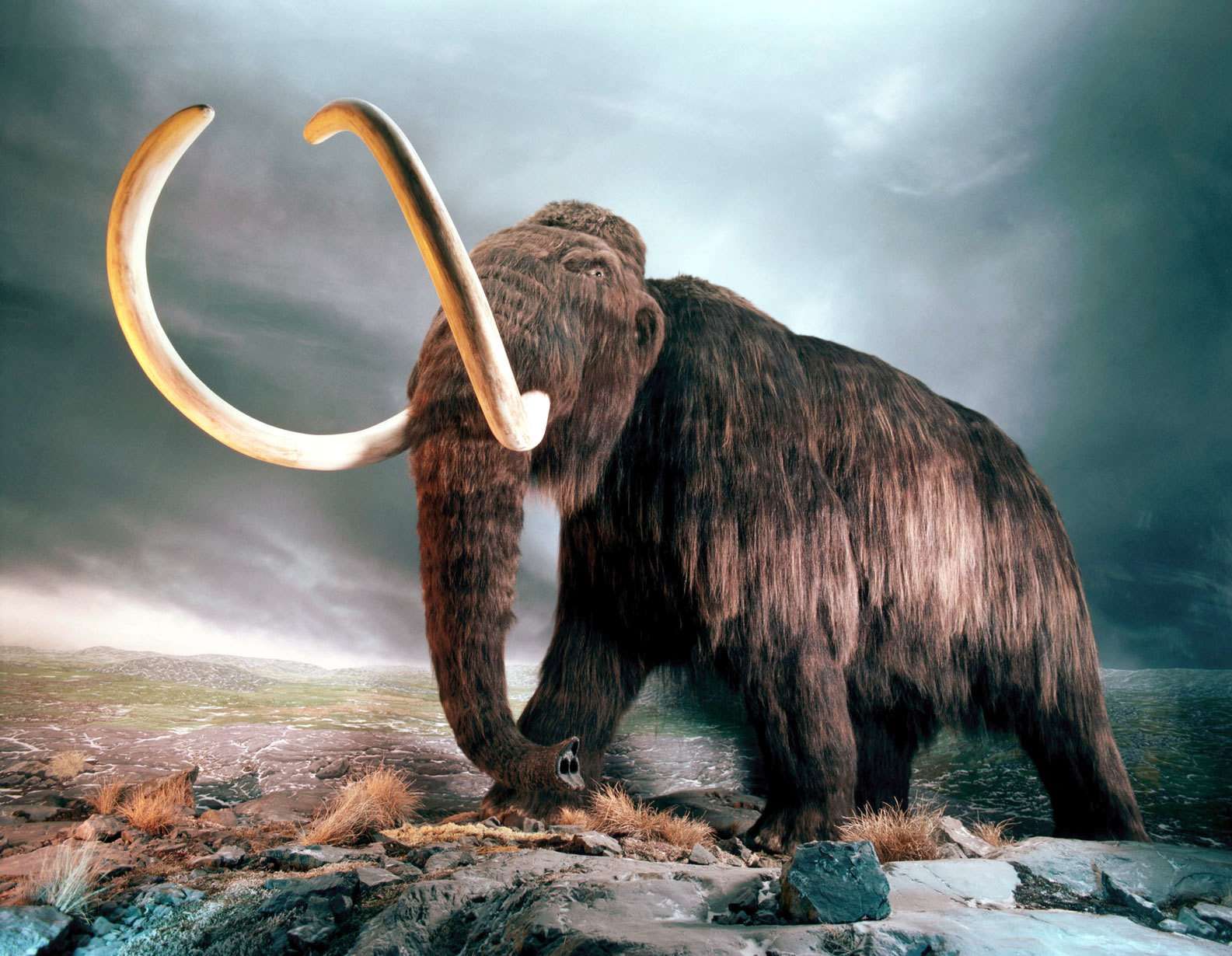Home>Technology and Computers>Theorizing the Web: Deciphering the Mysteries of Digital Evolution and Innovation


Technology and Computers
Theorizing the Web: Deciphering the Mysteries of Digital Evolution and Innovation
Published: January 22, 2024
Join us on a journey to decode the complexities of digital evolution and innovation at Theorizing the Web. Prepare to be inspired, enlightened, and ready to take your marketing game to the next level.
(Many of the links in this article redirect to a specific reviewed product. Your purchase of these products through affiliate links helps to generate commission for Regretless.com, at no extra cost. Learn more)
Table of Contents
Welcome to the thrilling digital odyssey of the World Wide Web! Imagine embarking on a journey through a realm where information flows like a mighty river, connections weave an intricate global tapestry, and innovation thrives at every turn. This is the world of the web – a place of endless possibilities and constant evolution. Here’s what makes this exploration exhilarating:
- The Genesis and Evolution: Witness the web’s transformation from a rudimentary network designed by Sir Tim Berners-Lee to today’s sprawling digital universe. It’s a tale of innovation, adaptation, and revolution.
- The Interplay of Technology and Society: Discover how web technologies are not just digital tools but pivotal actors on the stage of global culture and business, shaping and being shaped by society.
- The SEO and Content Symphony: Marvel at how search engine optimization (SEO) and content creation dance together in perfect harmony, driving the visibility and success of web content in this digital age.
- The User-Centric Universe: Step into the shoes of the end-users, the heart and soul of the web, whose interactions and preferences are the lifeblood of this digital ecosystem.
- The Continuous Learning Curve: Embark on an intellectual adventure in a field where learning never stops, where each new technology and strategy is a doorway to uncharted territories.
- The Future Forward: Glimpse into the future, where emerging technologies promise to redefine our online experiences and challenge our understanding of what the web can be.
- The Ethics and Responsibilities: Navigate the complex web of ethical considerations and responsibilities that come with shaping a platform as influential as the web.
So, buckle up for an enlightening ride through the intricate web of technologies, strategies, and human interactions that make up the World Wide Web. Whether you’re a tech enthusiast, a digital marketer, or simply curious about the digital world, this exploration is bound to captivate your imagination and expand your understanding of the web as we know it.
The Web as a Digital Ecosystem

Understanding the web as a digital ecosystem is key to grasping its complexity and dynamism. This ecosystem comprises a myriad of elements, including hardware (like servers and networking infrastructure), software (encompassing various applications, protocols, and operating systems), and the human element (the users who interact with and contribute to the web’s ongoing evolution). Each of these components plays a crucial role in the functionality and evolution of the web, making it a complex and adaptive system similar to biological ecosystems.
Components of the Digital Ecosystem:
- Hardware Infrastructure: This includes servers, data centers, network routers, and other physical equipment that form the backbone of the internet.
- Software Applications: From web browsers and content management systems to complex applications running on servers, software is the tool that users interact with directly.
- Protocols and Standards: Protocols like HTTP/HTTPS, TCP/IP, and DNS are the rules and standards that ensure seamless communication across the web.
- User Interaction: Users are not just passive recipients of information; they interact with, contribute to, and shape the web through their behaviors, preferences, and feedback.
- Content Creation and Distribution: The creation of digital content, whether it’s text, images, videos, or interactive media, and its distribution via various channels like websites, social media, and apps.
- Search Engines and SEO: Search engines act as gatekeepers to the web’s content, while SEO strategies ensure that content is discoverable and ranks well in search results.
- Data Analysis and Management: The collection, analysis, and management of data play a critical role in understanding user behavior, improving web services, and making informed business decisions.
- Cybersecurity: Protecting the integrity, confidentiality, and availability of data and services on the web is crucial in an era where cyber threats are increasingly sophisticated.
The digital ecosystem model emphasizes the interdependence of these components. Changes in user behavior can drive software innovation, which in turn may lead to new hardware developments. This interconnectedness ensures that the web is not a static entity but a dynamic, evolving environment. Moreover, the ecosystem is characterized by its openness and scalability, allowing for the integration of new technologies and ideas, facilitating growth and innovation.
The diversity within the web ecosystem is its strength. Just as biodiversity is crucial for the health of natural ecosystems, a diverse range of technologies, platforms, and user communities is essential for the vitality of the web. This diversity fosters resilience, enabling the web to withstand and adapt to challenges like technological disruptions, cyber threats, and regulatory changes.
The Impact of Web Technologies

Web technologies form the fundamental bedrock of our online experiences. At their core are HTML (HyperText Markup Language), CSS (Cascading Style Sheets), and JavaScript – a trio that collectively shapes the modern web. HTML is the standard language for creating and structuring web pages and applications. It forms the backbone of all web content, defining the structure and layout of web pages. CSS, meanwhile, styles these HTML elements, dictating everything from layout to color schemes, ensuring that the web is not only functional but also aesthetically pleasing. Then there’s JavaScript, the scripting language that breathes life into websites, enabling interactive features and dynamic content. Together, these technologies create a rich, interactive web experience, essential in today’s digital landscape.
The Role of Web Technologies in User Experience and SEO:
- Creating Responsive Design: Responsive web design ensures that websites look and function seamlessly across different devices, an essential factor in providing a positive user experience and improving SEO rankings.
- Enhancing Website Speed and Performance: Fast-loading websites are crucial for user satisfaction and are a significant ranking factor in search engine algorithms. Optimization of CSS and JavaScript, along with efficient HTML coding, plays a vital role in enhancing website speed.
- Building Interactive and Engaging Websites: JavaScript enables interactive features like drop-down menus, modal windows, and animations, which can significantly improve user engagement and time spent on the site.
- Implementing SEO-Friendly Structure: The use of HTML tags (like title tags, meta descriptions, and header tags) is fundamental for search engines to understand and index a website’s content effectively.
- Improving Accessibility: Web technologies also play a crucial role in making websites accessible to all users, including those with disabilities, which is not only a best practice but increasingly a legal requirement.
The impact of these technologies extends far beyond the creation of visually appealing websites. They are instrumental in shaping how a website communicates with its audience, ensuring that the content is not only accessible but also engaging and optimized for search engines. In the competitive digital space, the interplay of HTML, CSS, and JavaScript is not just about aesthetics; it’s about creating online platforms that resonate with users and rank well in search engine results.
The Dynamics of Search Engines and SEO

Search Engine Optimization (SEO) is a critical aspect of web theory, bridging the gap between content creation and online visibility. It’s a complex and dynamic field, constantly evolving in response to changes in search engine algorithms and user behavior. SEO involves a range of strategies and techniques aimed at improving a website’s visibility in search engine results pages (SERPs), thereby driving more organic traffic to the site.
Read more: The Epic Evolution Of Ponyta Revealed!
Essential Components of SEO:
- Keyword Research and Optimization: Identifying and integrating relevant keywords into web content is crucial. It helps search engines understand the context and relevance of the content, matching it with appropriate user queries.
- Content Quality and Relevance: Creating high-quality, informative, and engaging content is key. Search engines prioritize content that provides value to users, answering their questions and offering solutions.
- On-Page SEO Elements: This includes optimizing title tags, meta descriptions, header tags, and internal linking structures. These elements help search engines understand the structure and content of web pages.
- Technical SEO: This involves improving the technical aspects of a website, such as site speed, mobile-friendliness, and structured data, to enhance user experience and facilitate better indexing by search engines.
- Link Building and Off-Page SEO: Acquiring high-quality backlinks from reputable websites increases a site’s authority, while social media engagement and other off-page tactics can drive traffic and enhance online visibility.
- Local SEO: For businesses serving local communities, optimizing for local search queries and listings in directories like Google My Business is essential.
- Adaptability to Algorithm Updates: Search engines frequently update their algorithms to improve the relevance and quality of search results. Staying informed and adapting SEO strategies accordingly is crucial for maintaining visibility.
SEO is not just about adhering to technical guidelines; it’s about understanding and responding to the needs and behaviors of the target audience. In a digital landscape where visibility can dictate success or failure, SEO is an indispensable tool for webmasters, content creators, and marketers alike.
User Experience and Web Design

User Experience (UX) and Web Design are intertwined disciplines crucial for the success of any website. They focus on creating a website that is not only visually appealing but also intuitive and easy to navigate. The ultimate goal is to provide a satisfying and efficient experience for users, encouraging longer visits and repeat traffic, which are vital factors for both user retention and SEO.
Principles of Effective Web Design and UX:
- Simplicity and Clarity: A clean, uncluttered design with a clear navigation structure helps users find what they need quickly and easily.
- Consistency: Consistent design elements across pages create a cohesive experience, making it easier for users to understand and interact with the site.
- Mobile Responsiveness: With an increasing number of users accessing the web via mobile devices, a responsive design that adapts to different screen sizes is essential.
- Fast Loading Times: Optimizing images, minifying CSS and JavaScript, and leveraging browser caching can significantly improve page loading times, enhancing user experience and SEO.
- Accessibility: Designing for accessibility means ensuring that the website is usable by people with disabilities, which broadens the audience and improves SEO.
- Engaging Content: Content should be engaging, relevant, and valuable to the target audience, encouraging them to spend more time on the site and interact with the content.
- Visual Hierarchy: Using size, color, and layout effectively can guide users’ attention to the most important elements on the page.
- Interactive Elements: Interactive features like hover effects, animations, and micro-interactions can enhance user engagement without detracting from the overall experience.
- Feedback and Error Handling: Providing clear feedback for user actions and helpful error messages improves usability and overall user satisfaction.
- Testing and Iteration: Regular testing and user feedback are essential for continually improving the user experience and keeping the design relevant and effective.
A website that excels in both UX and Web Design is more likely to achieve higher engagement, lower bounce rates, and better SEO rankings. In the end, it’s about creating a harmonious balance between aesthetic appeal, functionality, and user-centric design.
Web Accessibility and Inclusivity

Web accessibility and inclusivity are pivotal in ensuring that the digital world is open and available to all, regardless of their abilities or circumstances. The concept of web accessibility involves designing websites and applications that are usable by people with a wide range of disabilities, including visual, auditory, physical, speech, cognitive, and neurological disabilities. This not only aligns with ethical and legal standards but also broadens the reach of web content, making it available to a larger audience.
Key Guidelines and Best Practices for Web Accessibility:
- Adherence to WCAG (Web Content Accessibility Guidelines): These guidelines are developed through the W3C process in cooperation with individuals and organizations around the world, with a goal to provide a single shared standard for web content accessibility.
- Text Alternatives for Non-Text Content: Providing alt text for images, video transcripts, and audio descriptions ensures that all content is accessible to individuals with visual or auditory impairments.
- Content that can be Presented in Different Ways: This includes ensuring that content is accessible through assistive technologies like screen readers and can be presented in different ways without losing information.
- Ease of Navigation and Input Modalities: Websites should be navigable via keyboard and should support various input methods, catering to users with different types of disabilities.
- Sufficient Contrast and Adjustable Text Size: Ensuring that text stands out against the background and allowing users to adjust text size helps those with visual impairments.
- Error Identification and Assistance: Making sure that errors are clearly identified and assistance is provided in understanding and rectifying them enhances usability for everyone.
The impact of inclusivity on web design and content creation is significant. Inclusive design not only meets the needs of a diverse user base but also reflects a brand’s commitment to equality and social responsibility. Moreover, it can lead to innovative design solutions that benefit all users. For instance, captioning videos not only aids those with hearing impairments but also benefits users in sound-sensitive environments.
In conclusion, incorporating accessibility and inclusivity into web design is not just a legal obligation or an ethical imperative; it’s a strategic approach to reaching a wider audience and enhancing user experience. This inclusive mindset should permeate all aspects of web design and content creation, ensuring that the web remains a space for everyone.
The Future of Web Technologies

As we look towards the future, the landscape of web technologies is poised for revolutionary changes, with emerging trends likely to redefine our online experiences. These advancements, ranging from artificial intelligence (AI) to virtual reality (VR) and augmented reality (AR), promise to further blur the lines between the digital and physical worlds.
Emerging Trends in Web Technologies:
- Artificial Intelligence and Machine Learning: AI and machine learning are already transforming web development and SEO. From personalized user experiences to AI-driven content optimization, these technologies are making websites more intuitive and efficient.
- Voice Search Optimization: With the rising popularity of voice assistants, optimizing for voice search is becoming crucial. This involves focusing on natural language processing and considering the conversational nature of voice queries.
- Augmented Reality (AR) and Virtual Reality (VR): AR and VR are set to revolutionize the web experience by offering immersive and interactive environments. This could redefine online shopping, education, and entertainment.
- Progressive Web Apps (PWAs): PWAs, which combine the best of web and mobile apps, are expected to become more prevalent. They offer offline functionality, fast loading times, and app-like experience, enhancing mobile user engagement.
- Blockchain Technology: Beyond cryptocurrencies, blockchain holds potential for decentralized web applications (DApps), offering enhanced security and data integrity.
- Internet of Things (IoT) Integration: The integration of IoT with web development will see websites interacting seamlessly with various smart devices, providing a more connected and automated user experience.
These technologies not only present exciting opportunities but also pose new challenges, particularly in terms of privacy, security, and ethical considerations. As web professionals, staying abreast of these trends and understanding their implications is essential in shaping a web that is innovative, inclusive, and responsible.
Ethical Considerations and Privacy

In the realm of web technology and SEO, ethical considerations and privacy are of paramount importance. As the web continues to permeate all aspects of our lives, the way we handle ethical issues and user privacy becomes a reflection of our societal values and professional integrity.
Critical Ethical Considerations in Web Technology:
- Data Privacy and Security: With increasing amounts of personal data being shared online, safeguarding this data against breaches and unauthorized access is crucial. Adherence to data protection regulations like GDPR and implementing robust security measures is essential.
- Algorithmic Transparency: As AI and machine learning algorithms play a larger role in determining what content users see, ensuring transparency in how these algorithms work and the biases they may contain is vital.
- Accessibility and Inclusivity: Ethical web development involves creating content that is accessible and inclusive, ensuring that digital products are usable by people with disabilities and from diverse backgrounds.
- User Consent and Control: Providing users with clear options regarding their data — how it’s collected, used, and shared — respects user autonomy and enhances trust.
- Ethical SEO Practices: Avoiding manipulative SEO tactics and focusing on providing genuine value to users aligns with ethical marketing practices.
- Sustainable Web Practices: Recognizing the environmental impact of web technologies and adopting sustainable practices in web development and hosting can contribute to a more environmentally responsible web.
As we forge ahead in the digital age, these ethical considerations and the commitment to privacy must be at the forefront of our actions and strategies. Upholding these principles is not only a legal requirement but also a moral obligation to ensure a fair, secure, and trustworthy web for all users.
Epilogue: Embracing the Digital Frontier

As we draw the curtain on our exhilarating journey through the labyrinth of the World Wide Web, it’s clear that this digital odyssey is far from over. The web, in its majestic complexity and perpetual evolution, continues to be a frontier of endless possibilities and challenges. Here’s a snapshot of the key takeaways from our exploration:
- The Web’s Infinite Canvas: We’ve seen how the web’s vast and intricate tapestry intertwines technology, society, and innovation, painting a dynamic and ever-changing picture.
- SEO and Content – The Dynamic Duo: Our deep dive into SEO and content creation revealed their pivotal role in shaping the web’s landscape, proving that visibility and engagement are the currency of the digital realm.
- The User Experience Odyssey: Understanding the user-centric nature of the web reminds us that at the heart of all technological advancements are the people who use them.
- The Learning Never Ends: In the web’s world, the only constant is change. Staying abreast of the latest trends and technologies is not just a pursuit; it’s a necessity.
- Ethical Digital Citizenship: Our foray into the ethical aspects of web technology underscores the responsibility we bear in shaping a fair, secure, and inclusive digital world.
- The Future is Now: As we gaze into the horizon, emerging technologies like AI, VR, and blockchain promise to redefine our online experiences, beckoning us to continue exploring and adapting.
In this digital cosmos, each of us is both a traveler and a creator, navigating through streams of data and contributing to the web’s ever-expanding universe. The journey through the World Wide Web is an ongoing adventure, one that challenges us to learn, adapt, and innovate. As we continue to explore this digital frontier, let’s carry the torch of curiosity, responsibility, and creativity, lighting the way for future explorers in this boundless and exciting digital expanse.












